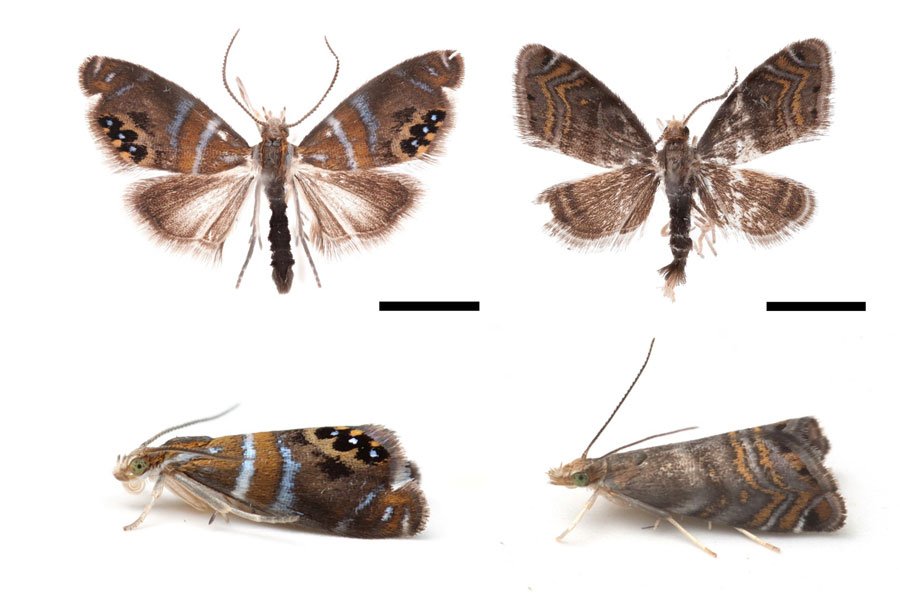MATSUI Yuki and his research team discovered two new moth species that likely evolved uniquely in the Ogasawara Islands!
Previously overlooked? Moths with 8mm wingspans
POINT
- The Ogasawara Islands, a UNESCO World Natural Heritage site, are harboring numerous endemic species. While many endemic species of moths are known from the Ogasawara Islands, there has been a lack of thorough investigation into the smaller moth species.
- Through faunistic surveys conducted in the Ogasawara Islands from 2022 to 2024, two new species belonging to the genus Glaucocharis in the family Crambidae of the superfamily Pyraloidea were discovered. They were described as new species, Glaucocharis triocellaris and Glaucocharis plumbofascialis.
- This research finding not only enhances the value of the Ogasawara Islands as a UNESCO World Natural Heritage site but also provides fascinating research materials for studying biological evolution on oceanic islands.
SUMMARY
The Ogasawara Islands, a UNESCO World Natural Heritage site, have never been connected to any other landmass since their formation, resulting in a unique endemic flora and fauna. Many endemic species of moths are known from the Ogasawara Islands. Among them, it is believed that about 25% of the species in the superfamily Pyraloidea in the islands are endemic.
This time, a research team led by Yuki Matsui, a research fellow at the Entomological Laboratory, Faculty of Agriculture, Kyushu University, discovered two new species of the genus Glaucocharis in the family Crambidae from the Ogasawara Islands. The research team described them as new species, Glaucocharis triocellaris and Glaucocharis plumbofascialis. While approximately 160 species of the genus Glaucocharis are known worldwide, and seven species are known in Japan, the newly discovered species significantly deviate in wing patterns and genital morphology from the known species, suggesting they have evolved uniquely in the Ogasawara Islands. Furthermore, both species are distributed sympatrically, and the larvae feed on mosses (bryophytes), making them fascinating research materials for studying speciation patterns in the oceanic islands.
This research finding was published in the international journal of taxonomy Zootaxa on 2 December 2024.
Comment from the Researcher

Top left and bottom left: G. triocellaris
Top right and bottom right: G. plumbofascialis. Scale: 2mm
Although the pyraloid moths in the Ogasawara Islands have been extensively studied, the newly discovered species have wingspans of only about 8 mm, suggesting why they were likely overlooked until now. Field surveys in the Ogasawara Islands are challenging, but we believe researchers with expertise in various taxonomic groups will discover unknown species.
Paper Information
Journal: Zootaxa
Title: Two remarkable new species of Glaucocharis (Lepidoptera, Crambidae, Crambinae) from the Ogasawara Islands, Japan
著者名:Yuki Matsui, Junpei Hamaguchi, Sadahisa Yagi, Toshiya Hirowatari
DOI:10.11646/zootaxa.5543.1.4
Research-related inquiries












 Contact
Contact
 Access Map
Access Map

